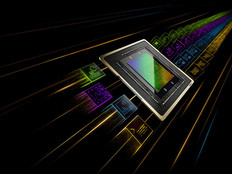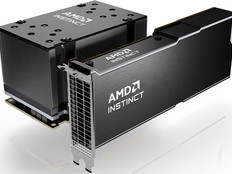Bedside IT
For the Indian Health Service, online access to medical records during routine exams means care-changing patient information no longer falls through the cracks — and with 1.9 million Native Americans and Alaskan natives receiving care at 400 clinics nationwide, there is plenty of health data that could go unnoticed.
But now, doctors equipped with tablets, notebooks or desktop computers in patient rooms at more than half of all IHS facilities can access their patients’ electronic health records to provide better care, says Dr. Theresa Cullen, CIO at IHS.
An EHR can alert doctors when patients are due for blood tests or specific health screenings, such as diabetes, or when patients are allergic to particular medicines, she says. As an added measure, each night an application built in-house analyzes each hospital’s or clinic’s patient health records, runs algorithms and notifies doctors if they might have missed a diagnosis. It also looks for trends in the data, which can warn doctors of potential outbreaks or epidemics, such as an increase in influenza.
“It’s to make sure our providers don’t miss anything because they are so busy,” Cullen says.
“If a patient you saw yesterday has blood pressure of 150 over 100, and you did not diagnose the patient with hypertension, it tells you that we think this person is a candidate for the diagnosis,” says Cullen, who continues to treat patients regularly by traveling from her Rockville, Md., office to an IHS clinic on the Tohono O’odham reservation in southern Arizona.
In recent years, a multimillion-dollar investment in new technologies has rocketed IHS, the Defense Department and the Veterans Affairs Department to the cutting edge of patient care. Computers and software that analyze data and alert doctors about potential disease outbreaks might sound futuristic, but in reality, they’re just the latest advances being rolled out in government healthcare facilities across the country.
Technology at the point of care not only improves patient safety and reduces errors, but lets government healthcare providers improve efficiencies and cut costs. For example, the National Naval Medical Center in Bethesda, Md., is investing in smart-room technology that integrates heart-rate monitors and other bedside medical equipment so doctors and nurses can view their patients’ vital signs from flat-screen monitors at their desks, says Lt. Cmdr. Cayetano “Tony” Thornton, the NNMC CIO.
Patients will receive tech gadgets as well: touchscreen devices that let them control room temperature and lighting, order meals, switch TV channels — as well as review their medical records and read online health materials to learn about their conditions.
“We’re trying to provide world-class healthcare and use technology to advance healthcare,” Thornton says.
The sheer scale of most federal healthcare operations makes even large private care networks pale in comparison. In all, the federal government serves more than twice as many patients as Kaiser Permanente, which has nearly 8 million plan members. So where is point-of-care IT heading? It’s viral — more tools providing more data, more broadly, more quickly as providers treat patients. A look at three distinct federal facilities illustrates the trends at the nexus of IT and medical care in government today.
On the Reservation
Dr. Michael Toedt of the Cherokee Indian Hospital in western North Carolina has the statistics to prove that EHRs improve healthcare.
Four years ago, the 20-bed hospital and primary-care clinic migrated from paper to electronic records, moving to a Veterans Health Administration system customized by the Indian Health Service.
At the Cherokee Indian Hospital, electronic medical records help doctors be more proactive in identifying patients’ needs and test screenings. As a result, breast cancer screenings have increased from 39% to 49%, and consultations with women about alcohol use and dependence have increased from 4 percent to 82 percent.
The IT department installed Wi-Fi throughout the hospital, which serves 14,000 Cherokee tribe members in North Carolina. Half the doctors chose notebook computers and the other half picked tablet computers. From the time patients check in through the time they leave the hospital, everything is logged in their EHRs. Doctors can prescribe medicine and order blood and other lab tests electronically. Each EHR provides physicians with alerts for necessary tests and screenings, which has improved healthcare dramatically, he says.
Screenings of domestic violence increased from 1 percent in 2004, the year before the EHR implementation, to 80 percent in 2007. Tobacco use screenings nearly doubled, from 43 percent to 80 percent.
“Most doctors think they are on top of everything, but it’s nice to have the EHR double-check and make sure we’re in compliance with standards,” says Toedt, the hospital’s executive director of clinical services.
The screenings have improved patient health, he says. For example, the percentage of patients with uncontrolled hypertension dropped from 27 percent to 21 percent, while those with healthy cholesterol levels increased from 71 percent to 75 percent.
Screenings are important because they identify problems and open up a dialogue with patients, Toedt says.
“It lets the community know that issues like domestic violence and alcohol abuse are not accepted behavior and that it’s OK to talk about it,” he says. “Having that message passed on through the whole community can change the community’s perception of what is normal.”
He can also take lab results, such as cholesterol values, and show a graphic that details how the patient has done over time. “It involves patients in their care, and they really like it,” he says.
At a Veterans’ Medical Center
Today, only about one-quarter of U.S. hospitals use barcode technology at the point of care to improve patient safety, but the Phoenix Veterans Affairs Health Care System, like most VA health facilities nationwide, has taken advantage of the technology for the past decade. The system serves veterans in central Arizona at a hospital medical center and at several outpatient clinics.
Hospital staff print out wristbands with barcodes to identify patients during their stays. Nurses use barcode technology to dispense medicine, making sure people get the right medication and dosage at the right times.

IT lets his staff at
the Cherokee Indian Hospital involve
"patients in their care, and they really like it."
“Medications are often dangerous, so placing some technology at the point of care makes medication administration safer,” says Karen White, barcode medication administration coordinator at the Carl T. Hayden VA Medical Center in Phoenix.
After the first year of operation, the barcode technology reduced errors by 75 percent, she says.
The technology involved in medication administration includes Wi-Fi, handheld barcode scanners and mobile medication carts, which each include a computer and drawers to store medication. For security, nurses type in PINs to open the drawers.
To administer medicine, a nurse logs in to a patient’s EHR and a barcode medication administration application. Once logged in, the nurse scans the barcode on the patient’s wristband and on the medication to ensure the medication is for the right patient, White says. Once the drug is administered, the patient’s EHR is automatically updated, she says.
If it’s the wrong patient or wrong medication, the computer beeps and a pop-up box warns, “Do not give.” For added security, the medicine cart has a motion sensor, White explains. If it detects that the nurse is away for several minutes, it warns the nurse with three beeps and then locks the drawers.
To further improve patient safety, the hospital this year expects to start using its barcode technology for managing blood transfusions.
Beyond the Navy’s Premier Hospital
As government leaders discuss and debate reforms needed within the broader healthcare industry, the Bethesda Naval Medical Center long ago began bringing its care into the 21st century.
99% Success rate for patient wristband and medicine barcode scans at the Phoenix VA Medical Center,
reducing the chance that a patient receives the wrong medication or an incorrect dosage
The center treats personnel from the military, mostly those wounded in Iraq and Afghanistan. Overall, it handles 8,000 hospital admissions and about half a million visits to its clinics each year.
For the past 18 months, it has taken a patient-centered, team-based approach to healthcare that focuses on preventive care, says Cmdr. Kevin Dorrance, department head of internal medicine at the medical center and at Walter Reed Army Medical Center in Washington, D.C. Medical personnel are grouped in teams of four providers, a nurse, support staff and specialists, including a behavioral health consultant.
The goal is to be proactive and focus on health maintenance, not just on treatment when patients become sick, says Dorrance, who spearheaded the effort, called Integrated Medical Home.
Patients can walk in without an appointment to see a doctor. If they need to see a cardiologist or gastroenterologist, the medical team consults with the specialists and makes the appointment for the patients. Doctors even proactively call patients in if it’s time to do an important screening. On average, doctors see 12 patients a day, allowing them to spend 20 to 30 minutes with each patient.
“It’s changing the way physicians think of healthcare. The way we’ve practiced healthcare made no sense. We put money in disease and end-of-life care, but we forgot how people got there,” says Dorrance. “Almost all diseases in this country are associated with preventable behavior. Our key feature is to work with the population before they get sick.”
Technology plays a pivotal role. While doctors use EHRs, patients have access to a web-based Personal Health Record (PHR), where they can access all their health information, e-mail their doctors and schedule appointments using online calendars, says Sean Lynch, Internal Medicine’s senior research coordinator at the Naval Medical Center. Patients can even avoid driving to the medical center by scheduling telephone conferences with their doctors through the PHR. In the future, the center will also make videos available online that can educate patients about living healthier lives.
“IT serves as the backbone. It helps with coordination and collaboration, which are key components to Medical Home,” Lynch says.
“Medical Home” refers to the Medical Home Management Portal, an application that lets the medical staff analyze patient health data and spot trends. It also lets providers drill down to information about individual patients to see if screenings are due or to study more specific data.
Elsewhere, the center is undergoing a major expansion because Walter Reed is closing and will merge with the Bethesda site in 2011. In anticipation, the center is investing heavily in new point-of-care technology.
Currently, hospital staff members mainly use desktop computers. But the IT staff is deploying Wi-Fi, along with tablet and notebook computers and Computers-on-Wheels, a computer cart that medical staffers will wheel from room to room as they make their rounds, Thornton says. With medical devices attached to notebook computers, nurses can take patients’ temperatures and blood pressure readings, and the data automatically uploads to the EHRs.
Medical staffers currently use 17- to 21-inch flat-screen monitors for regular computer use, but in specialty areas, such as radiology, they use higher-quality 30- to 42-inch medical-grade monitors that let them make better diagnoses, he says.
During the next 18 months, besides installing smart-room technology, the center will deploy radio frequency identification tags to track and locate patients, hospital workers and equipment. Each staff member will also wear a wireless Voice over IP device so they can more easily communicate with other care providers, particularly during emergencies.
Overall, point-of-care technology does make a difference in improving healthcare, says the Indian Health Service’s Cullen. So far, about 200 hospitals and clinics at her agency have deployed EHRs and other point-of-care technologies, but another 200 medical facilities remain, and the agency is working to speed adoption.
“The whole focus of this is that we care about our patients — the family members, the moms and children,” Cullen says. “We want to ensure that no one is left behind. American Indians have the lowest life expectancy — it’s a glaring inequity. I think these kinds of IT tools make sure that achieving health equality is not an afterthought.”







